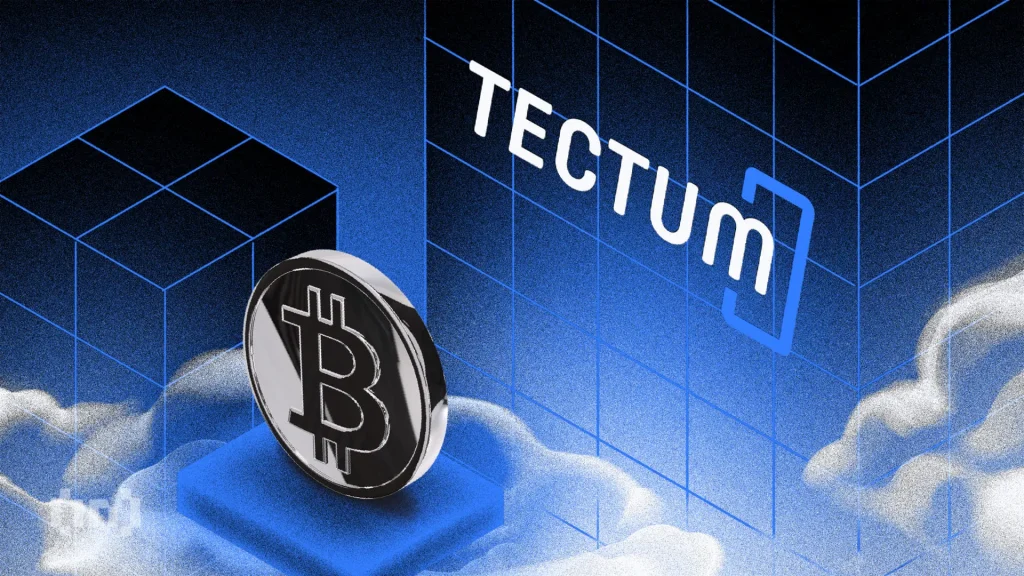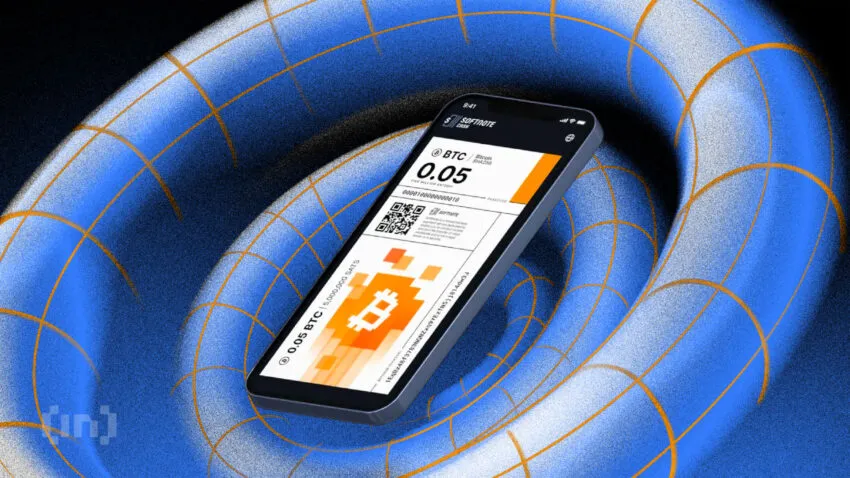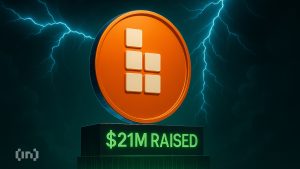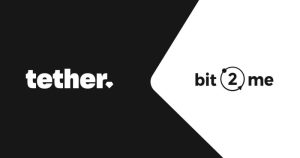Reaching Satoshi’s Goal a Usable Bitcoin

Editorial Note: The following content does not reflect the views or opinions of BeInCrypto. It is provided for informational purposes only and should not be interpreted as financial advice. Please conduct your own research before making any investment decisions.
When Bitcoin was introduced in 2008, the vision was to create a digital currency free from the control of centralized entities or governments. This vision was outlined in the paper “Bitcoin: A Peer-to-Peer Electronic Cash System,” published by “Satoshi Nakamoto” on October 31, 2008.
Now, after all these years, we are witnessing this vision come to life with innovative new solutions that are set to revolutionize the way we think about digital currency.
The goal of Satoshi Nakamoto was for Bitcoin to be used for transactions. But this objective has never been fully achieved. All that has been going around are buzzwords of Bitcoin breaking boundaries with adoption.
The issue with Bitcoin and other cryptocurrencies that came afterward was scalability. Bitcoin offers a very slow performance and needs an average of 10 minutes to create a block. Even Ethereum, designed to do better than Bitcoin in terms of technology, has a meager 20 transactions per second. Furthermore, with 1,500 transactions per second, Ripple can’t compete with traditional institutions like Visa and Mastercard.
Visa is said to be capable of processing 24,000 transactions per second, and Mastercard as many as 5,000.
In the midst of all this, there’s a crypto solution working silently behind the scenes to bring Satoshi Nakamoto’s vision to reality. This company’s objective is to make Bitcoin more spendable for retail payments globally.
This blockchain project’s name is Tectum, developed by the company Crispmind Ltd, and judging from the innovative solutions it is creating. It will soon become a transformative name in the crypto industry. With a blockchain capable of processing over 3.5 million transactions per second, Tectum solves all the scalability issues with Bitcoin payments, and this makes it one of the fastest blockchains.
Unlike most blockchains, Tectum stores every transaction in a separate block and processes them across multiple nodes. This feature enables the blockchain to process more transactions and improve scalability without compromising security.
Making Bitcoin Spendable With Tectum SoftNote
Crispmind offers an innovative scaling solution called the SoftNote, which operates on the Tectum Blockchain, allowing for instant and free transfers of various cryptocurrencies, including BTC. The main Tectum products to facilitate this include:
The Tectum Blockchain
The Tectum Blockchain uses the proprietary record change signature management algorithm. It is the fastest layer-1 blockchain, confirmed to process 3.5 million transactions per second. Moreover, it provides instant ownership and event status delivery to users. This performance significantly outpaces Solana’s latest speed benchmarks
The Tectum Blockchain is mainly built on the idea of hashing. It enables faster processing of data items because of three levels of nodes in the blockchain. This includes the master node, designed to carry all the heavy-weight data, and the upper level that conducts communication with hashes.
The benefit of the “hashing idea” is that it instantly verifies and publicly accessible event-related data. Indeed, separate accessibility levels are also provided for different transaction-related modules.
The Tectum Blockchain is ideal for lightweight and high-volume applications. However, it also has use cases for the Internet of Things. This blockchain can store billing, legal, municipal, and logistics records. Furthermore, it can record the geo-position of a drone or the system status of a vehicle multiple times per second. It is safe to say that the Tectum Blockchain is the bedrock of other products within the Tectum ecosystem.
Tectum Emission Token
The Tectum Emission Token ($TET) is this platform’s native cryptocurrency, serving as an integral part of its current and future products. It has three main functions: paying transaction fees, governing, and earning additional rewards with staking.
Tectum’s XFA

Inside the blockchain lies the bedrock of this protocol’s security, Tectum’s XFA. It is an exclusive X-factor authentication technology that provides users with impenetrable security. Indeed, this platform’s developers know that a sophisticated attack can compromise 2-factor authentication methods. Hence, they are creating a disruptive and innovative authentication solution that is more scalable and flexible.
Tectum’s XFA ensures that cybercriminals never access users’ credentials, even if a server is compromised. They plan to achieve this by integrating on-device encryption through a secure tunnel protocol. Furthermore, they will combine human and machine logic to create quantum-proof login encryption. When this is done, it will provide a Dual-Tone Multi-Frequency (DTMF) fallback and SMS/QR-code hacking protection simultaneously.
This security solution is designed to be next-generation, providing users with enough protection regardless of their location. Its security solutions also employ a SYD—Something You Do mechanism. The logic is that cybercriminals are more likely to guess even your strongest password than what you do. Thus, physical action, such as signing your name or making a picture of your favorite drawing, is a better authentication method than using a password or a 2FA app.
Overall, Tectum’s XFA solution ensures that users don’t have to worry about security when transacting with their favorite cryptocurrencies.
Tectum SoftNote

Tectum SoftNote is the core infrastructure or solution powering high-speed Bitcoin transactions for users. SoftNote is a transactionless payment system whose immediate benefits include offering zero fees and instant payments. It facilitates low-cost on-chain transfers using the Bitcoin node and overlay network.
The overall objective of SoftNote is to make BTC a scalable global cash system where users can make instant payments with zero fees. This solution uses SoftNote Bills, which can be emitted using Bitcoin, Ethereum, or USDT as a store of value. Furthermore, the developers envision a potential liquidity of $918,644,464, and the SoftNote Bills can be minted through Tectum’s web wallet and mobile app.
Many benefits come with this innovative solution.
First, SoftNote provides even more anonymity than native Bitcoin transactions. Its payments can’t be traced by public address since they weren’t registered in the native Bitcoin network ledger. Secondly, SoftNote offers a Superconductive Digital Environment that removes fees and delays. This immediately translates to instant payment processing, including zero transaction costs.
The SoftNote is also internet independent. This means that the paper-printed SoftNote Bills can be used to make payments without an internet connection. However, the recipient of this physical payment must be connected to the Tectum network. It offers a crypto payment gateway and cash for crypto by introducing $1, $5, $10, and $20 denominations of SoftNote Bills.
Other benefits to highlight include a strong technical framework, excellent security, network independence, and it is microtransaction friendly.
How the SoftNote Works to Make Bitcoin Spendable
SoftNote is making Bitcoin more spendable for retail payments through a step-by-step procedure. The steps include:
Wallet Creation
The whole process of using SoftNote for Bitcoin payments starts with creating an account in the SoftNote Wallet. Inputting your name, email, password, etc., is simple and takes less than a minute to complete. It is from the wallet that people can begin minting, filling SoftNote Bills with liquidity, and transacting with them.
SoftNote Minting
Once a wallet has been created, the user utilizes TET, the native token of the Tectum Blockchain, to develop SoftNote bills. Each bill minted has a unique serial number and a corresponding BTC value.
Provision of Liquidity
On minting the bills, liquidity providers (LP) transfer BTC to the BTC wallets of the SoftNotes that are to be filled. If successful, the LP licenses for these SoftNote bills are given to the relative Tectum account.
Circulation
The Minter of these SoftNote bills releases them into circulation, facilitating Bitcoin or any other crypto or fiat payment for retail. The circulation can happen in different ways, including a network of merchants, crypto cash/cash for crypto transactions, sales, and exchanges.
Generation of Revenue
When the end user spends a SoftNote bill, only a retailer is charged a capped fee of 1% whenever these bills are used for Bitcoin payment at retail, with a maximum fee of $1 for each transaction. On the other hand, the Mt and LP license holders are each paid 20% of the fees generated in commissions for the initial minting and filling of the SoftNotes, received on every transaction. Should the same individual mint a SoftNote and provide liquidity, they will get 40% of the fees generated.

Continuing the Satoshi Vision and Legacy With Tectum and SoftNote
Irrespective of the numerous breakthroughs of Bitcoin in terms of price and the new hype around the ETFs, it wasn’t Satoshi’s vision. Satoshi didn’t envision Bitcoin as an investment asset. Instead, it wanted it to be an alternative currency to fiat and could help people make payments worldwide. Has the vision been achieved? The answer is no, as Bitcoin payments are still not as global as it is often hyped to be.
The issue originates from the tech pitfalls of the apex cryptocurrency, taking as much as 10 minutes to create a block. However, there’s now a solution to this problem. Tectum, a blockchain FinTech solution with 3.5 million transactions per second, provides the ideal environment that brings Satoshi’s legacy and vision to reality.
Tectum was developed by Crispmind, a Chicago-based software development firm, with Alex Guseff as the co-founder. Its mission aligns with that of Satoshi: to provide a platform that allows day-to-day payments and retail transactions with Bitcoin and cryptocurrencies.
Frequently Asked Questions
Disclaimer
This article is sponsored content and does not represent the views or opinions of BeInCrypto. While we adhere to the Trust Project guidelines for unbiased and transparent reporting, this content is created by a third party and is intended for promotional purposes. Readers are advised to verify information independently and consult with a professional before making decisions based on this sponsored content. Please note that our Terms and Conditions, Privacy Policy, and Disclaimers have been updated.













